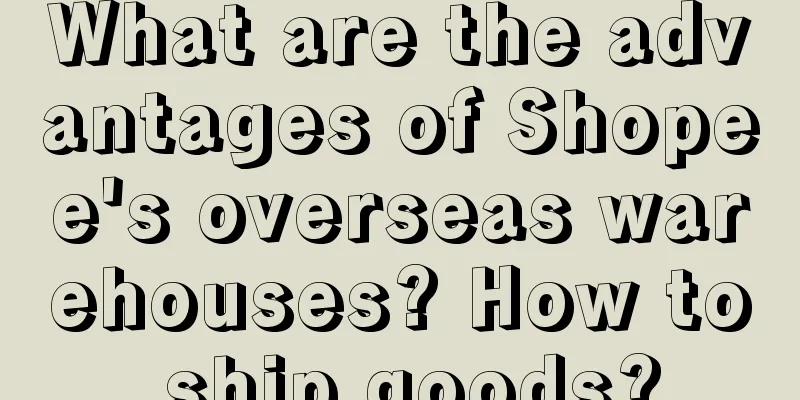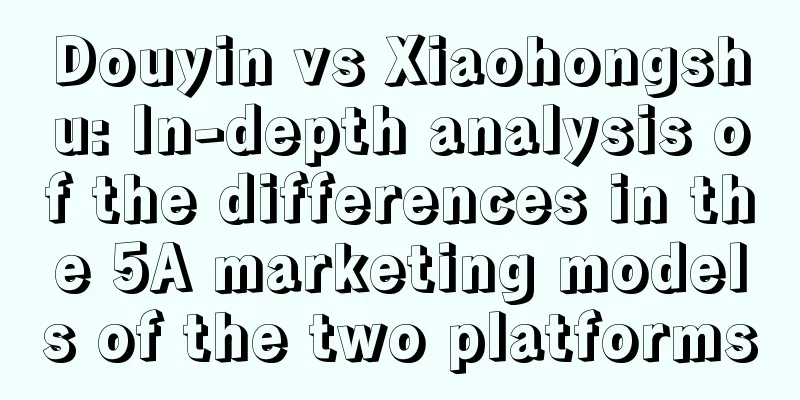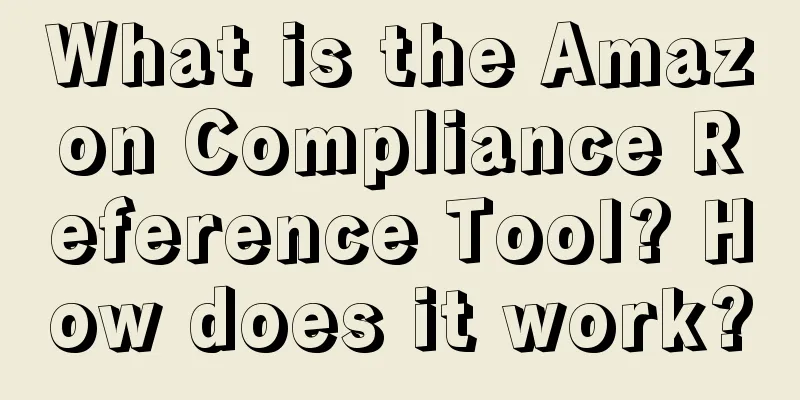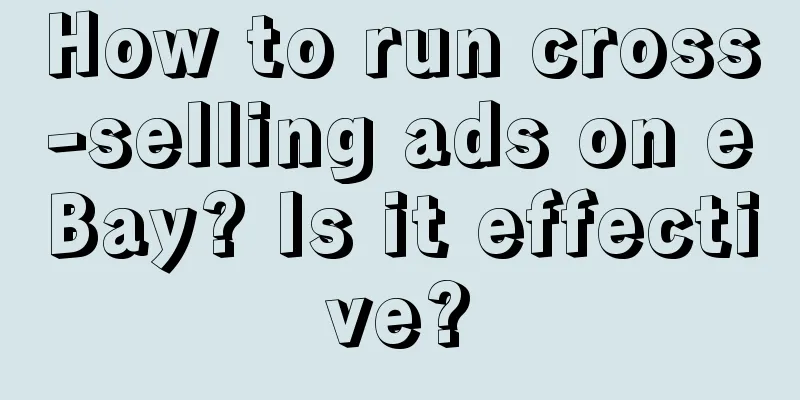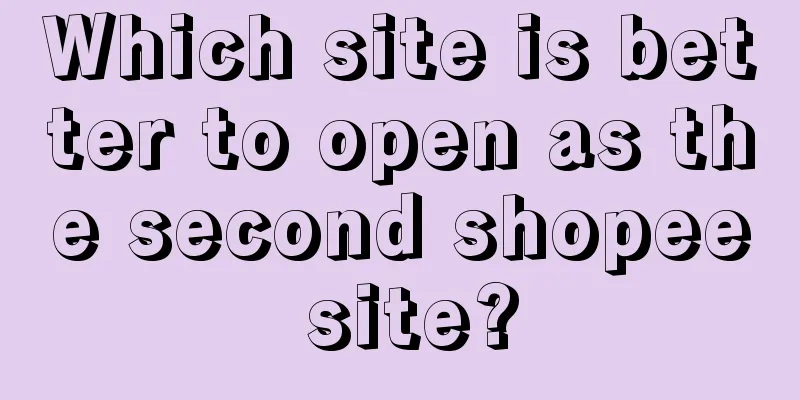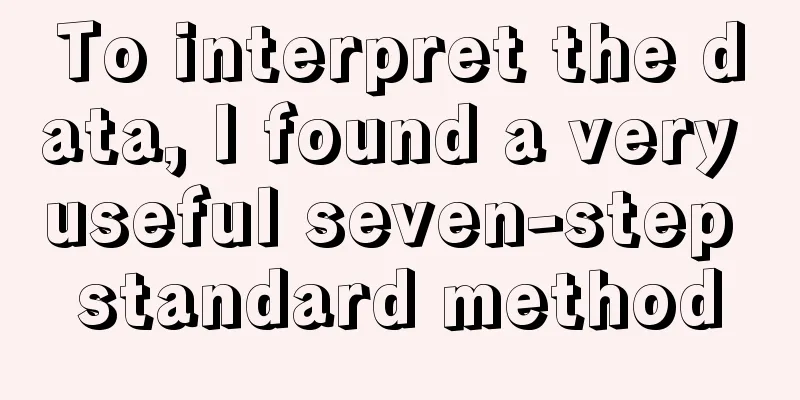To defeat your opponent, you rely on positioning; to defeat your opponent, you rely on conflict!
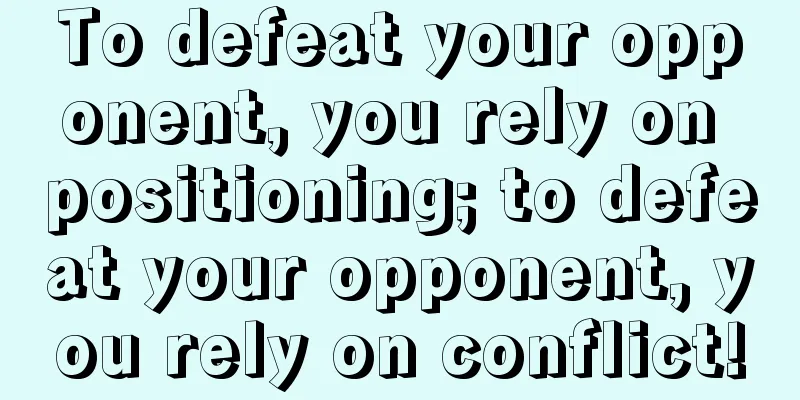
Have you noticed that despite the emergence of new marketing methods such as live streaming, traffic investment, seeding, and private domain marketing, marketing has become increasingly difficult. Almost all brands face a common problem: in a crazy involutionary market, how can marketing defeat the enemy in one move? If someone asks me this question, I usually advise them to read Ye Maozhong's book. Many of Mr. Ye's practical cases and marketing thinking have a very important feature, which is to defeat the enemy with one move and make the opponent lose his temper. How did he do it? Let's discuss it with you today. 1. Why is marketing becoming more and more difficult despite the increasing number of marketing theories?Let’s take a side case - Sany Heavy Machinery. Sany Heavy Machinery is a brand that sells excavators. They found Mr. Ye to do planning in 2010. At that time, Japanese brands were the main players in the Chinese excavator market, followed by European and American brands, and finally domestic brands. At that time, the most representative brand was Komatsu, a Japanese brand, which occupied about 1/3 of the Chinese excavator market. Domestic brands could only take a small piece of the pie in this market. Sany Heavy Machinery was already a leader among them, but its sales volume was only ranked sixth in the country. After Mr. Ye took over, he proposed a strategy for Sany Heavy Machinery, called "Sany Excavator First". It is said that after proposing this strategy, the customers were dumbfounded and everyone was asking like crazy: “Is this a strategy?!” They had two key questions. The first question was, "I'm not No. 1, so why do you call me No. 1?" Teacher Ye explained, "Although you are not No. 1 in sales, you may be No. 1 in sales growth." Mr. Ye helped Sany Heavy Machinery find six firsts: first in sales growth, first in service brand, first in product series, first in global production capacity, and first in innovation. Through these "firsts", the target audience was given an illusion that "I am the boss of this industry", thereby raising the brand's position in the industry. The client raised a bigger question to him: "You call the client's strategy or his important slogan 'No. 1'. Is this creativity? Is this strategy? This seems like a sentence that anyone can write. Why should I spend millions to hire Ye Maozhong to do this?" "First" may sound crude, but behind this is Mr. Ye's profound insight. He said: "Because your target group is farmers, the information window is relatively narrow, and it is useless to say that this product is good. It is even more impossible to tell them the value of the product, or even the emotional value of the product, which is not effective." What is the best way to encourage farmers to buy? It is to stimulate their herd mentality, telling them that this is the best thing to use and that your product is the best, and they will buy it. This is a very profound insight behind this strategy. In addition, Ye Maozhong did two things for the clients, but these two things were not written in the book because they were not so aboveboard. But all the operations were effective. By the end of 2010, just one year later, Sany's actual excavator sales had reached 20,614 units, completely surpassing Komatsu and becoming the real leader in the industry. From this case we can see what is very different about Ye Maozhong: his opponents were strong, complex, and his marketing methods were diverse, but I completely turned things around with a very simple, even seemingly unbelievable, move. The case of Sany Heavy Machinery reminds me of many brands that promote sales. For example, in Focus Media advertising, many customers say that their sales are far ahead in the country. Why is it that promoting sales is useless? But it is useful for Sany? What is the difference behind it? A very important difference behind this is that Sany Heavy Machinery's target group is farmers, who are more easily influenced by the herd mentality. But if your target group is not farmers, such a similar group herd mentality will not become the purchasing motivation of your target group. For example, if you sell clothing, and you ask how many people in the country are buying it, it is useless because clothing is often about individuality, not conformity. Today, we have discovered a phenomenon: there are more and more marketing theories, but marketing seems to be getting harder and harder. Why? Because many marketing activities have deviated from the essence of marketing. Ye Maozhong believes that the essence of marketing is to understand the needs. As long as we grasp the real needs, marketing can defeat the enemy in one move. The Internet has changed the way many marketing contents are disseminated, but it has not changed the essence of marketing. Look at Ye Maozhong. Even in the Internet age, he is still a living fossil who has not been eliminated. He still receives many orders. For example, he has received many orders from Mafengwo, Zhihu, Renrenche and Yiche.com. Almost all of these four clients have used his methods and achieved growth to varying degrees. Although many new methods such as private domain, traffic, live broadcast, and grass-planting are emerging, the fundamental meaning of marketing has not changed, which is the speculation on human nature. The success of a brand cannot rely solely on live streaming, traffic investment, seeding, and private domains. These are just means and tools. The most important thing is to grasp the essential needs of users. Therefore, we say that insight into needs is often more important than learning marketing. 2. Learning to understand demand is more important than learning marketingThere is a line in the movie "The Godfather": "People who can see the essence of things in half a second and people who cannot see the essence of things in their entire life are destined to have completely different fates." This sentence talks about people's insight. We in the advertising industry always talk about so-called insight. I can give it a precise definition: insight is the ability to penetrate into the essence of the problem. Let me give you an interesting example, which has been circulating in business schools for a long time: In 1964, a photo of Iron Man Wang Jinxi was published on the cover of China Pictorial, and a Japanese oil company spotted a huge business opportunity based on this photo. First, they judged from the clothes Wang Jinxi was wearing in the photo that this kind of clothes could only be worn in winter in the area between 46 and 48 degrees north latitude. Therefore, they inferred that the Daqing Oilfield was roughly located between Qiqihar and Harbin. They judged the diameter of the oil well based on the posture of Wang Jinxi holding the handle in the photo. From the distance between the oil well where Wang Jinxi was standing and the oil field behind him, they inferred the approximate energy storage and production capacity of the oil field. As a result, they quickly understood China's oil exploration needs and quickly designed oil equipment suitable for large oil field exploitation. When the Chinese government solicited design plans for large oil field exploitation from countries around the world, this company won the bid at once. This is the power of insight. This reminds me of many big bosses in China. They seldom read professional books on marketing, but they seem to be born with a natural understanding of marketing. For example, Shi Yuzhu of Melatonin, Huang Zheng of Pinduoduo, and Lei Jun of Xiaomi, why are their marketing capabilities so strong? In fact, it is not because of their strong marketing capabilities, but because of their strong ability to perceive demand. I think some people have a vague understanding of the word "demand". Let's define demand more precisely. Demand is the consumer's purchasing motivation, which means you need to understand why consumers buy from you. Purchasing motivation can be divided into two levels, explicit and implicit. The so-called explicit purchasing motivation is the demand on the surface, and the implicit purchasing motivation is the desire behind the surface demand. Why are many elderly people in China always deceived by false health care advertisements? The explicit purchase demand is because they want to live longer, and the implicit desire is actually that they want to spend more time with their children and grandchildren. Why are young people obsessed with games? The obvious demand is that they want to play games for fun, excitement, and to kill time. The hidden desire is that they feel frustrated in reality and hope to get satisfaction and a sense of accomplishment in the virtual world, so they are addicted to games. Why do people buy cars? The explicit demand is simple, it is a means of transportation. Buying a car is for status, ambition, power, and to match my identity. This is the underlying demand. After we see the surface needs, we must also see the deeper needs behind them. In this era, insight is more important than in any previous era. This is because today's business has entered the era of "supply and demand reversal". In the previous business environment, supply was less than demand, but now supply is greater than demand, which means that almost all surface demands are met. If a person wants to succeed in business, he must be able to see through the vague and hidden needs of consumers. Why are the abilities of many veteran entrepreneurs of the previous generation no longer effective in today's era? Because the requirements for business capabilities in these two eras are different. The previous generation of businessmen lived in an era when supply was less than demand. They were better at integrating resources to do things. As long as the goods were given, insight was not necessary. This generation of businessmen, on the other hand, lives in an era when supply is greater than demand. There are too many goods and not enough consumers. We must learn to compete in a red ocean by dislocation. Therefore, we must have the ability to understand the hidden needs of consumers and discover business opportunities. How can you develop this insight? A very important point is that you have empathy. I think many businessmen of the previous generation were too rational. They cared nothing about money and gradually lost their delicate feelings for life. But insight is not rational analysis, but a warm feeling of life. Very rational people have little insight. Therefore, I often advise many bosses to cultivate their own hobbies, such as watching movies and visiting art exhibitions, otherwise you will not be able to sell things to young people. Only by maintaining insight can your brand establish a psychological connection with consumers, and you will have the opportunity to let consumers know you and identify with you. There is a director in Japan named Takeshi Kitano, who is also a famous comedian in Japan. When the Wenchuan earthquake occurred in 2018, some people compared the Wenchuan earthquake with the Great East Japan Earthquake. When asked whether Japan could handle the disaster better than China, what do you think was Kitano's answer? Kitano Takeshi said that a disaster is not an event in which 20,000 people died, but an event in which one person died 20,000 times. What he meant was that death is not a string of numbers, it is a very sad thing, and I cannot use numbers to measure who has done well and who has not done well. Look at how strong his empathy and insight are. Another popular example is a beggar who went begging. On the first day, he wrote on a wooden board: I am blind, and no one sympathized with him. On the second day, he changed the text to: It is spring, but I cannot see. Many people sympathized with him and donated money to him. "Spring" reflects the beggar's insight. Many people have a misunderstanding that we are now in an intelligent business society, we have a lot of big data, and it seems that we no longer need to rely on traditional insight capabilities. Just having big data is enough. On the contrary, the more we enter the era of big data, the more we should practice to feel the users with warmth, rather than treating users as data parameters. Although there are more reference data, your ability to absorb data is limited, and your interpretation is mostly one-sided. Ye Maozhong has been serving Goodbaby strollers for a year. They did a market research and found that the factor that consumers are most concerned about when buying strollers is safety. About 72% of people said that safety is the first factor they consider when buying a stroller. However, after Mr. Ye looked at the data, he said that it was not right. We could not focus on security because security was definitely not a real need. Because the baby cannot feel whether the stroller is safe or not, the baby can only feel whether the stroller is comfortable or not. Safety is not valid for parents either, because safety depends mainly on whether the parents are careful when pushing the stroller, not whether the stroller itself is safe or not. His strategy for Goodbaby is "Goodbaby stroller, more comfortable." On the product side, he thinks that parents care more about convenience rather than safety. Because when you push a stroller out, the factor that directly determines whether the stroller is good or bad is convenience. For example, if I push the stroller down the stairs, can I push it down smoothly? Can this stroller be placed in the trunk of a car? This is a perceptible selling point. You see, many of the needs that the data tells you are not so-called real needs, but false needs. If you want to dig out the essential needs, you still have to rely on our essential understanding of the matter and our insight. To sum up: our business has entered an era of reversed supply and demand, and consumers' superficial needs are almost all met. If you want to win in business, you must have the ability to see through hidden needs. Choosing a startup track, positioning a brand, and thinking about advertising ideas are essentially about seeing through user needs. User needs are business opportunities. So the question is, how to understand the needs? Teacher Ye said: "Through conflict." 3. Winning the opponent depends on positioning, and defeating the opponent depends on conflict.Conflict, as the name suggests, is the collision of two opposing forces. The essence of business is to resolve conflicts. You see, if you are tired but still want to go crazy, you have to have a cup of coffee. If you want to keep warm but also want to look good and not cumbersome, then there are products like down jackets. "Discovering conflict means discovering demand, and marketing can achieve exponential growth with one fatal move. Creating conflict means creating demand, and marketing can change the track and reconstruct the market." These are two classic sentences in Ye Maozhong's conflict theory. Let us use some cases below to let everyone understand what conflict theory is all about. First, let’s take a classic example, which is the case of Ye Maozhong’s Heilan Home. What were the menswear brands doing more than a decade ago? They were all trying to segment the market and compete. For example, Jomoo was an expert in trousers, KingBoss was an expert in jackets, and Lilang was an expert in business casual wear. Anyway, they were all experts in various fields. When Heilan Home found Ye Maozhong, Ye Maozhong felt that it was not possible to further segment the market. Further segmentation would only take away a small piece of the pie, and the logic of conflict was not to segment the market, but to solve the problem fundamentally. Later, Ye Maozhong saw a conflict: men don’t like shopping, but they still need enough daily clothes. So he formulated a strategy called “Hailan Home, Men’s Wardrobe” and “Go to Hailan Home Twice a Year”. This positioning has accompanied Heilan Home for many years. By 2017, Heilan Home's annual revenue was about 18.2 billion, and its net profit was about 3.3 billion. Its market value ranked 14th among national clothing companies, which is a very impressive number. Many people in first- and second-tier cities may look down on Heilan Home and think it is low-end, but it is a very profitable and large company. Its growth to where it is today has a certain causal relationship with the strategy that Mr. Ye gave it in his early years. Judging from Ye Maozhong’s successful cases, why can he always defeat the enemy with one fatal move? Because he always helps companies formulate strategies based on the most fundamental problems of consumers. No matter what the market structure is like or how competitors operate, he always starts from the most fundamental contradictions in the world and solves them. I often say that to defeat your opponent, you rely on positioning; to defeat your opponent, you rely on conflict. What are the roots of conflict theory? I think it comes from philosophical theory. Mao Zedong's philosophy is the philosophy of contradiction. Things are composed of primary and secondary contradictions. The primary contradiction determines the main direction of development of things. Whatever you do, just grasp the primary contradiction of things. Ye Maozhong, Ren Zhengfei, and many other entrepreneurs are all top students of Mao's Selected Works. Ye Maozhong's reading range includes various advertising and marketing theories from China and the West, but the one that benefited him the most was Mao's Selected Works. Second, conflict theory also conforms to some laws of physics. For example, what happens when two opposite forces, hot and cold, collide? An explosion. If this extends to business, two opposite forces will form a sense of contrast, which will naturally attract the attention of users and trigger a spread. For example, putting a pale, thin, young beauty on TikTok will not cause much of a stir, because there are many such beauties on TikTok. But if it is a beauty with a physique like Schwarzenegger, the situation is different. The contrast is very strong, and she will become popular on TikTok in an instant. Teacher Ye explained his conflict theory and introduced a psychological concept - the left and right brain theory. Dr. Sperry, an American biologist and winner of the 1981 Nobel Prize in Physiology, proposed the theory of division of labor between the left and right brain. He divided the human brain into the rational brain and the emotional brain. The left brain is the so-called rational brain, which mainly processes text, data, and abstract information. The right brain is called the emotional brain, which mainly processes sounds, images, and some intuitive, creative, and uncalculated feelings. Ye Maozhong believes that marketing is about attacking people's left and right brains: the left brain pursues price, the right brain pursues value; the left brain pursues health, the right brain pursues pleasure; the left brain pursues practicality, the right brain pursues art; the left brain pursues cost-effectiveness, the right brain pursues romance. Frankly speaking, this theory has been abandoned by the academic community. Many scholars, especially brain science scholars, including Dr. Sperry himself, have denied the left-right brain theory. Today's brain scientists will not say that the division of labor between the left and right brains is correct, but many people in the business field still quote this theory. This is because ordinary people can easily understand this theory, and you can easily use it to package your own theory. Various children's educational products are still using the left-right brain theory to develop products. Why did Ye Mao come up with the "Conflict Theory" in the middle and late stages of his career? Because there are theories such as positioning and super symbols on the market, and each consulting company has its own theory, and their influence on the entire advertising industry and on the client is becoming more and more profound. Mr. Ye has been a big name in the advertising industry for many years, but he has never had a unique methodology. He may have been forced by the environment to need a theory to represent himself, so he came up with the conflict theory. Frankly speaking, I think Mr. Ye is a person without theory. He only has one trick, but it is absolutely effective. Mr. Ye's trick is to discover conflicts and resolve them from both emotional and rational perspectives. One trick is enough to defeat the enemy. Final WordsMarketing is a science, an art, and a war. When you shoot, you’ll see blood! *This issue’s interpretation comes from Conflict Author: General Liang Source: WeChat public account "General Liang (ID:liangjiangjunisme)" |
<<: TikTok has joined the price war, but which sheep is being fleeced?
>>: AI+Xiaohongshu search, create popular notes at low cost!
Recommend
How to do SEO optimization when building a foreign trade website? What should you pay attention to?
SEO optimization is also a long-term job. Therefor...
Douyin group buying: huge traffic "troubles" offline merchants
This article introduces several major problems tha...
Come and create this account, you will definitely make money!
Script accounts are accounts that provide various ...
How many days does Amazon Black Friday and Cyber Monday last? What are the rules?
Amazon is a cross-border e-commerce platform, but ...
Is Shopee Brazil easy to do business? What products are better to sell on Shopee Brazil?
Shopee has now begun to enter the South American m...
WeChat has opened two new traffic entrances for small shops
WeChat has adjusted its content ecology and opened...
What should I do if my Amazon peers maliciously leave me a bad review? How to deal with it?
Amazon merchants all know the importance of store ...
What is Coupang?
Since its establishment in 2010, Coupang has rapid...
New video live broadcast function internal testing
Explore the latest developments in AI video genera...
Is the Vova cross-border e-commerce platform closed? How is this platform?
In recent years, with the vigorous development of ...
How to change the price of Shein products? What is the appropriate price?
As a world-renowned fashion e-commerce platform, S...
"My Altay" is a big hit, and I am healed by the lines
"My Altay" has become a huge hit, with h...
How to make a budget for Xiaohongshu spotlighting? |Practical version of spotlighting
On Xiaohongshu, a marketing platform with great po...
Which Amazon third-party payment platform has the lowest exchange rate? How to choose?
On the Amazon platform, everyone generally needs a...
15,000 words sharing丨How to build a user growth system?
User growth is a very important part of operations...

